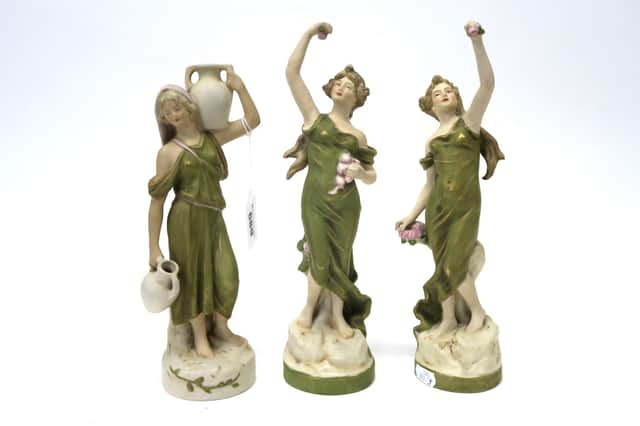Royal Dux dogs and elephants are prized


I have to admit some of the models are really quite lovely, especially those from Duchov.
In 1853, in the town of Duchov in what is now the Czech Republich, a factory was founded and the story of Royal Dux began.
Advertisement
Hide AdAdvertisement
Hide AdAfter several years of producing utility ceramics, the factory was bought by Eduard Eichler and became known as E Eichler Thonwaren Fabrik.
Success followed with the production of terracotta, faience and majolica items, with the company winning a Silver award at the 1878 Paris Exhibition.
A pink triangle became the trademark in 1900.
The raised triangle has an acorn in the centre with the inscription ‘Royal Dux Bohemia’, which is still used today.
The Art Nouveau and the Vienna Secession were probably the most successful periods for Royal Dux production.
Advertisement
Hide AdAdvertisement
Hide AdThe company won awards in exhibitions in Milan, Liberec and St Louis, having representatives and showrooms all over Europe.
The Art Nouveau production is the most collected period.
Pieces from this period are very recognisable with their fleshy colourings and attention to facial detail.
Classically modelled maidens abound, along with shell-shaped vases and bowls, elephants, dogs and Arab figures on camels and horses.
The World Wars affected production.
Output ceased in the First World War, while, in World War Two, the German government took over.
After the war it was taken over by the new communist government of Czechoslovakia.
Today, the company is once again privately owned.